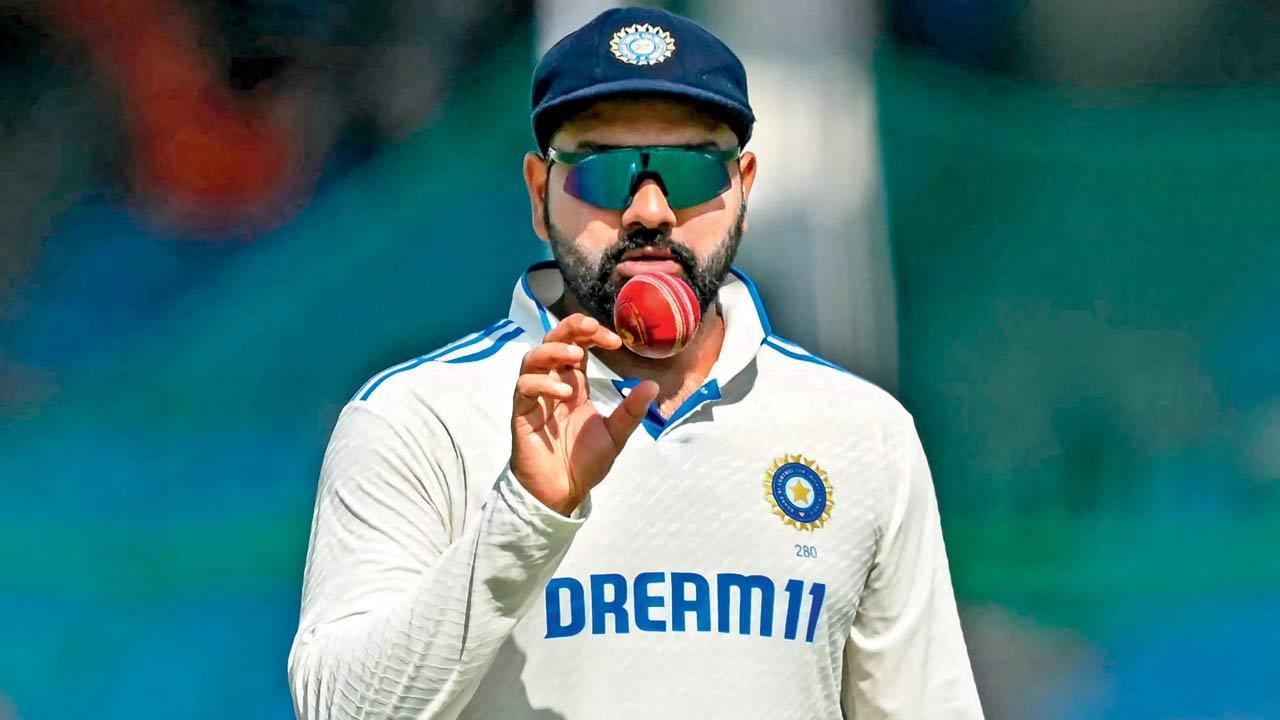With his stellar leadership and aggressive approach in red and white-ball cricket, India’s skipper has set the bar high for his successor through Bossball

Rohit Sharma. Pic/AFP
A cricket team, it’s often said with good reason, assumes the character of its captain. Unlike most other sports where captaincy is often a ceremonial position and is generally conferred on the best or the seniormost player, cricket places monumental demands on the skipper, who must be a leader too in every sense of the term.
ADVERTISEMENT
Indian cricket has been fortunate that since the turn of the millennium, it has identified and nurtured a string of individuals who have gone on to lead the national team with great distinction. Sourav Ganguly encouraged players to express themselves and facilitated the influx of an entire generation of highly skilled youngsters. Under Rahul Dravid, India learned to win overseas. Mahendra Singh Dhoni emerged as the surprise package, a punt by the Dilip Vengsarkar-led selection panel in 2007 giving the country its most successful skipper in terms of global trophies won.
Virat Kohli was a natural successor to Dhoni, not only because he had led the under-19 team to the World Cup crown in 2008 but also because he had served lengthy apprenticeships under the Jharkhandi in red and white-ball cricket.
T20 World Cup win in June
And what of Rohit Sharma, the man who inspired a sensational run in the 50-over home World Cup, only for it to end in heartbreak in the final in Ahmedabad? The harbinger of aggression who led from the front at the T20 World Cup in June, pulling one rabbit after another out of the hat and helping the team end its 11-year hunt for an ICC title. The shrewd tactician who is most at home in the Test cauldron, moving a piece here, placing a fielder there, always a couple of steps ahead of the opposition, making the play rather than chasing the game.
Also Read: ‘This is Arsenal’s year’
Even before the beginning of this week, the legacy of Rohit, the captain, had taken concrete shape. The events on Day Four of the Kanpur Test against Bangladesh, on Monday, have sent his stocks soaring sky-high, buttressing his reputation as a proactive skipper and batter who is setting an example that will be near-impossible for his successor, whoever that is, to emulate.
A Test that even a decade back would have devolved into a dreary draw received a generous dose of oxygen largely because of Rohit’s predilection for the out-of-the-ordinary. Losing 235 overs out of a potential 270 on the first three days of any Test practically guarantees a stalemate 99 times out of 100, especially when there is little assistance for the bowling fraternity. But once India dismissed Bangladesh for 233, less than an hour into Session Two on Day Four, Rohit decided he wasn’t going to die wondering.
Armed with a single-point agenda — to go hard at the bowling, without exception and with concentrated firepower — that was executed to perfection by the batting group with the unquestioned leader setting the tone, India rocked Bangladesh with a sensational assault unprecedented in Test history. The team 50 was realised in a ridiculous 19 deliveries, the hundred in 62. If Bangladesh had reconciled to a hard grind and eight hours on the park chasing leather, they were in for a rude shock.
No fear of losing
India scored their 285 first-innings runs at 8.22 per over, a number that wouldn’t have been out of place in a T20 outing. They were prepared to settle for being bowled out for 100 if that’s how their gung-ho approach unravelled, Rohit revealed later. He wasn’t being blase or irreverential; he merely outlined the lengths he was willing to go to in pursuit of victory. India didn’t truly believe they would be bowled out for 100, but by accepting the potential for that possibility and willing to work around it, they revealed the mentality of a champion, a mentality that can only come to those who have no fear of losing.
Has Rohit set the template for his successor(s) to follow? He will be the first to point out that each skipper must carve out his own identity, that it wouldn’t be fair to expect Shubman Gill or Rishabh Pant or whoever the next Test captain is to take a leaf out of the Rohit cookbook. But fair or not, that’s how they will be judged. After all, the Rohit school of leadership has become the new benchmark in the cricket world.
Why Bossball?
While Rohit Sharma has always been known for his fluent strokeplay up the order, the sheer audacity with which Rohit, the leader, the boss, commanded his troops to decimate the opposition (Bangladesh) in the Kanpur Test is why mid-day has coined the catchphrase Bossball. Interestingly, the word boss comes across in almost everything Team India did in the thrilling Kanpur Test.
India bossed over the visitors in all aspects of the match. In the batting department, India’s willow-wielders scored at an unimaginable rate of 8.22 runs per over across 35 overs. The bowlers did brilliantly too, picking up 17 wickets in less than two-and-a-half days of play while another two-and-a-half days was washed out due to rain and wet ground conditions.
India’s fielding was outstanding too, in particular skipper Rohit’s spectacular one-handed effort to send back Litton Das, which was followed by Mohammed Siraj’s diving catch to dismiss Shakib Al Hasan. It’s clear that Team India followed the orders of boss Rohit to a tee.
 Subscribe today by clicking the link and stay updated with the latest news!" Click here!
Subscribe today by clicking the link and stay updated with the latest news!" Click here!







